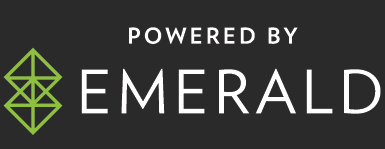By Dan Larkman, CEO of Keynes Digital
As 2025 approaches, several trends are poised to shape the year ahead for the marketing industry. From the evolution of retail media and premium inventory to the maturation of Connected TV (CTV), marketers will face both opportunities and challenges. Here’s what we can expect.
Retail Media: The Hype vs. Reality Debate
Retail media continues to dominate industry conversations, but is it truly the game-changer it claims to be? From a data perspective, retail media offers undeniable value. The ability to leverage last-touch purchasing data and other consumer insights presents significant opportunities for targeting across channels—not just on the owned platforms where this data originates.
However, critics argue that retail media may be yet another industry fad. At its core, it often feels like repackaged data with a fresh name slapped on it to create buzz. The bigger challenge lies in how brands can make retail media assets more retail-friendly while genuinely closing the loop between data insights and measurable business outcomes. For all the excitement, many marketers are left wondering: does retail media truly move the needle, or does it merely generate more noise?
The year ahead will likely see increased scrutiny on the efficacy of retail media, with marketers demanding clearer ROI and more innovative approaches to using this data across diverse channels.
Premium Inventory: The Battle for Quality and Viewer Experience
As the battle for premium inventory heats up, the conversation is shifting toward viewer experience. Mediocre content paired with repetitive or poorly targeted ads risks alienating audiences, particularly as streaming platforms and apps multiply. A key issue is the inconsistency in ad quality across different tiers of inventory. For example, premium platforms like Hulu enforce standards to avoid repeating the same vertical within an ad pod, ensuring a smoother experience.
Local news and niche sports highlight another trend: the resurgence of live, community-based content. Brands like Chick-fil-A entering this space face the challenge of creating compelling content offerings that resonate with audiences while maintaining the high-quality ad experience expected from premium inventory. In 2025, we’ll likely see more discussions about the balance between content innovation and ad presentation.
Meanwhile, consolidation among players like Amazon and Apple TV is beginning to reshape the premium inventory landscape. Amazon’s move to capture Apple TV’s audience and its partnerships with platforms like Peacock suggest a trend toward bundling premium content to create centralized hubs for viewers. Success will hinge on usability. Amazon’s user-friendly interface gives it an edge, but competitors will need to match or exceed this standard to remain relevant.
CTV: Growth, Challenges, and a More Crowded Marketplace
The Connected TV (CTV) market has matured significantly, but it faces growing pains. What was once a slow-growing space has exploded, with more networks and advertisers jumping into the fray. The low barrier to entry means anyone can launch an app and start serving video ads, but this has led to a glut of supply, particularly in Free Ad-Supported Streaming TV (FAST). The result? Lower fill rates and a need for platforms to differentiate through quality and innovation.
Advertisers, however, are catching on. The 2024 election cycle saw a surge in political ads on platforms like Hulu—a stark contrast to previous cycles where CTV was underutilized. The upcoming year will likely see further investment in CTV as advertisers realize its potential for precision targeting and engagement.
Still, skepticism around cost remains a hurdle. Sticker shock over high CPMs (cost per thousand impressions) breeds doubt, particularly when cheaper alternatives exist. Yet data consistently shows that higher CPMs often deliver better performance, especially when paired with strong creative and precise targeting. The challenge for marketers will be convincing stakeholders that paying more is a worthwhile risk when the immediate ROI isn’t always clear.
The Road Ahead: Usability, Innovation, and ROI
As these trends unfold, one theme unites them all: the importance of usability. Whether it’s Amazon’s intuitive interface, Hulu’s thoughtful ad placement, or the seamless integration of retail media across channels, platforms that prioritize user experience will win in 2025.
For marketers, the key to success lies in balancing innovation with practicality. Retail media must evolve beyond the buzzword phase to deliver tangible results. Premium inventory requires a thoughtful approach to content and ad quality to maintain its value. And in CTV, marketers must embrace both the opportunities and challenges of a crowded marketplace while staying laser-focused on ROI.
2025 promises to be a pivotal year for the marketing industry. By addressing these challenges head-on and leveraging the tools at their disposal, marketers have a unique opportunity to shape the future of advertising in a way that drives real impact. The question is, will they rise to the occasion?








